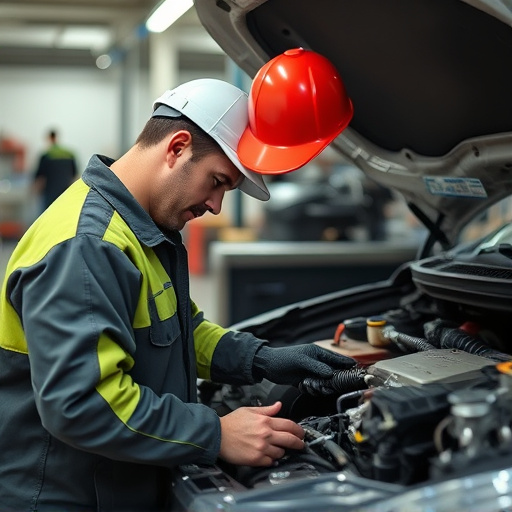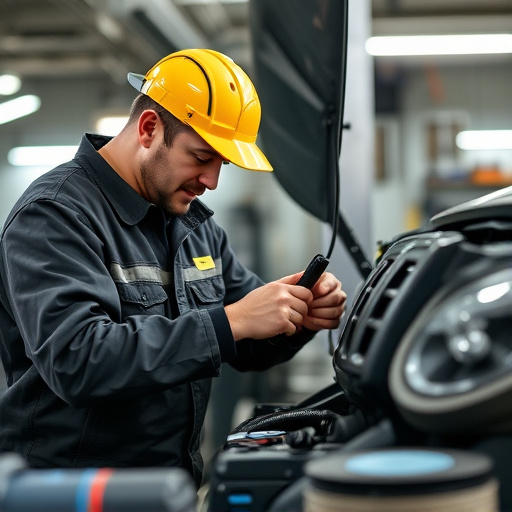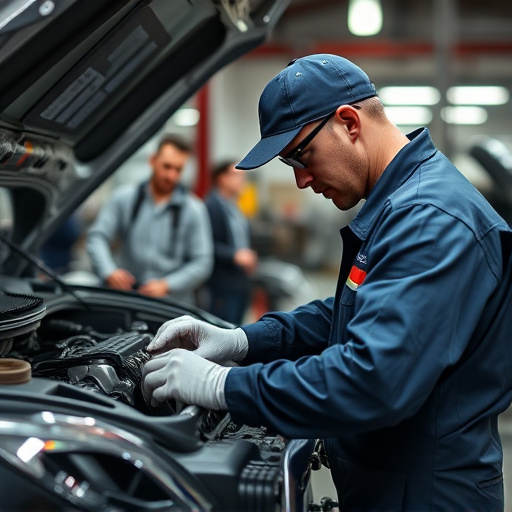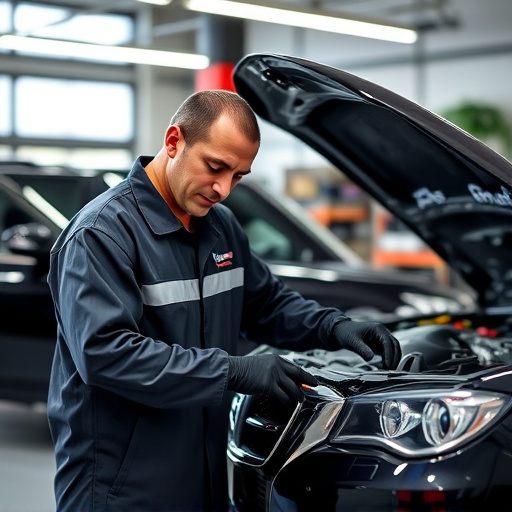Model S collision centers offer efficient repairs with structured workflows, prioritizing customer convenience and vehicle quality. Skilled technicians assess damage, specialized teams handle structural and paint work, and transparent updates keep customers informed. Advanced technologies streamline scheduling, procurement, and labor allocation, minimizing downtime for luxury vehicle restoration, while managing expectations regarding turnaround times fosters trust.
In today’s fast-paced world, efficient vehicle repairs are crucial for customers with time-sensitive schedules. This article delves into the intricacies of Model S collision center workflows and repair scheduling, offering insights on how these centers optimize turnaround times without compromising quality. We explore strategies to enhance customer experiences by setting realistic expectations, ensuring transparency throughout the repair process. Understanding these workflows is key to improving efficiency in Model S collision center operations.
- Understanding Model S Collision Center Workflows
- Efficient Scheduling: Optimizing Repair Turnaround Times
- Customer Experience: Setting Realistic Expectations
Understanding Model S Collision Center Workflows

Understanding Model S Collision Center Workflows
Model S collision centers are designed to efficiently manage repairs, ensuring quick turnaround times for Tesla owners. The workflow typically begins with an initial assessment of the damage, where skilled technicians examine the car body restoration needs. This step is crucial in determining the extent of work required and estimating repair scheduling. After the evaluation, the center coordinates with customers to schedule auto body services, prioritizing urgent repairs.
The process involves specialized teams for different aspects, such as structural repair, paint repair, and final quality checks. Vehicle paint repair, a critical component, requires precise techniques to match the Model S’s distinctive finish. As the work progresses, regular updates are provided to customers, ensuring transparency throughout the entire vehicle restoration journey.
Efficient Scheduling: Optimizing Repair Turnaround Times

Efficient scheduling at a Model S collision center is paramount for minimizing downtime and maximizing customer satisfaction. By optimizing repair turnaround times, these centers can ensure that vehicles are restored to pre-accident condition swiftly and effectively. This involves coordinating various tasks, from parts procurement to skilled labor allocation, with precision.
Advanced technologies like digital scheduling software play a crucial role in this process, enabling real-time updates and streamlining communication. Such tools facilitate the management of complex repair schedules, allowing auto body shops to balance workload efficiently. This results in reduced wait times for customers, enhances productivity, and ultimately contributes to a smoother, more satisfying experience for those relying on Model S collision center services for their vehicle repairs, be it an auto body repair or a more intricate automotive repair task.
Customer Experience: Setting Realistic Expectations

When visiting a Model S collision center for repairs, it’s essential to manage expectations from the get-go. Customers should be aware that car body repair, especially for luxury vehicles like the Model S, requires meticulous attention to detail and can take more time than standard bumper repairs. This is due to the high-quality materials and precision engineering involved in Tesla manufacturing.
Realistic scheduling is key to a positive customer experience. Collision centers should communicate openly about estimated turnaround times for various body shop services, ensuring customers understand that these timelines are based on the complexity of their unique vehicle’s needs. By setting clear expectations from the beginning, collision centers can foster trust and maintain a good relationship with their clients.
Model S collision centers play a pivotal role in ensuring swift and effective repairs, enhancing customer satisfaction. By understanding the unique workflows involved, implementing efficient scheduling practices, and maintaining transparent communication with clients, these centers can deliver exceptional service. Optimizing turnaround times not only benefits owners but also contributes to a smoother, more dependable automotive ecosystem.














